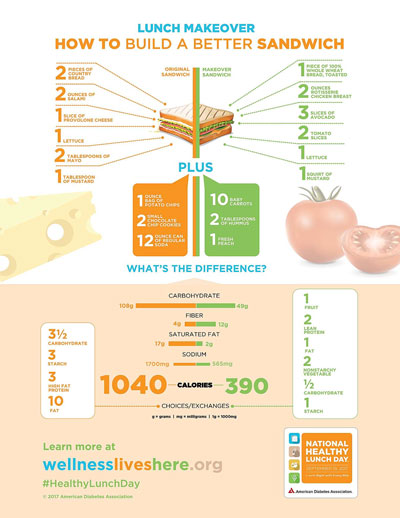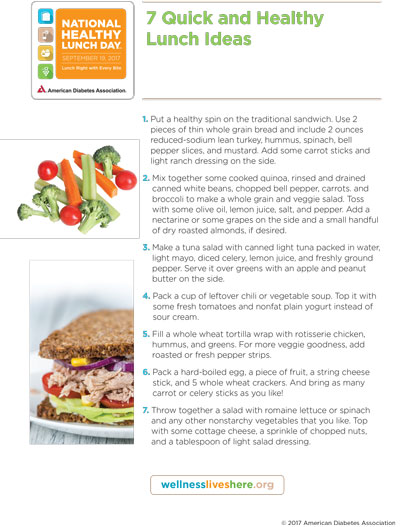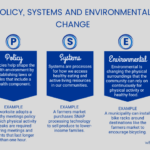
Sep 27, 2017 | News
 It’s no secret that food insecurity and food access is a problem in South Carolina, especially for those who live in a food desert and those who live in areas with limited access or no access to healthy foods. Many South Carolina communities are trying to change that through SNAP and mobile market initiatives and by establishing policies that provide access to healthy choices.
It’s no secret that food insecurity and food access is a problem in South Carolina, especially for those who live in a food desert and those who live in areas with limited access or no access to healthy foods. Many South Carolina communities are trying to change that through SNAP and mobile market initiatives and by establishing policies that provide access to healthy choices.
Several communities are partnering to present on their successes and goals. There will be three food and nutrition sessions at the Leadership Summit:
- Addressing Food Insecurity and Improving Healthy Food Access in Rural Communities, Monday, October 23, 11:15 AM – 12:15 PM
This session will demonstrate the need for community collaboration to bring a collective impact in fighting food insecurity and inequality in rural communities. As an example, the United Way of Kershaw County’s Mobile Nutrition Center fights food insecurity and inequality by delivering food boxes, which addresses not only the concern of hunger, but the health ailments that low-income residents face due to food insecurity and inequality. In the rural counties of Lee and Williamsburg in the Pee Dee Region of South Carolina, food security and access to healthy foods are factors that are linked to risk for overweight or obesity. Collecting and using data to support obesity prevention activities as well as environmental supports and partnership development are promising strategies that are effective in addressing obesity-related disparities.
- Promoting SNAP Champions: Innovations with Farmers’ Markets and SNAP Outreach Strategies to Support Healthy Eating for South Carolina Families, Monday, October 23, 2:30 PM – 3:30 PM
This session explores practical ways to promote healthy eating by increasing access to nutrition programs through various initiatives, including Hub City’s “SNAP Champion” Model and SC Thrive’s SNAP Outreach Partnership Model. The presenters will highlight the importance of community partnerships to increase impact of initiatives created to reduce food insecurity and promote healthy, stabilized communities.
- Creating the First Municipal Food Policy Committee of SC and Replicating this Effort Across the State, Tuesday, October 24, 10:15 AM – 11:15 AM
The City of Columbia will outline how the city formed the first municipal Food Policy Committee in the state, the purpose and will discuss the goals and the potential projects. Speakers will also discuss the importance and ramifications of a city making the decision to form an FPC in its municipal government.
Take advantage of these great sessions at the Leadership Summit, October 23-24 in downtown Columbia. Register online today!

Sep 6, 2017 | News
 In years past, the Leadership Summit for Healthy Communities, formerly the SC Obesity Summit, included skill-building sessions to support the development, growth, and sustainability of local community coalitions. This year, we’re bringing those skill-building sessions back to the Summit under the name Birds of a Feather.
In years past, the Leadership Summit for Healthy Communities, formerly the SC Obesity Summit, included skill-building sessions to support the development, growth, and sustainability of local community coalitions. This year, we’re bringing those skill-building sessions back to the Summit under the name Birds of a Feather.
What exactly is a Birds of a Feather session? They’re informal gatherings of like-minded individuals who want to discuss a certain topic without a pre-planned agenda. They’re also a great way to meet other community members with similar interests. Birds of a Feather sessions often focus on audience-driven discussion, professional networking and grassroots participation.
There will be two Birds of a Feather sessions at the Leadership Summit:
- Coalition Leadership, Monday, October 23, 11:15 AM – 12:15 PM
LiveWell Greenville’s Sally Wills and ESMMSC’s Kelsey Allen will lead a discussion on coalition leadership. Effectively leading a community coalition can be both rewarding and challenging. This session will help local coalition leaders identify their personal leadership style through self-assessment tools such as the DISC assessment and the Meyers-Briggs test. Based on these results, leaders will determine strategies for creating a well-balanced and effective coalition.
- Civics 101 & How to Advocate Locally, Tuesday, October 24, 11:30 AM – 12:30 PM
SC Recreation and Parks Association’s Jim Headley and ESMMSC’s Hannah Walters will lead a discussion on Civics and How to Advocate Locally. It’s been years since we all had high school civics, and many things may have escaped our memory. And, because each local government runs differently, the advocacy process differs. Get a refresher on civics and learn how to effectively advocate for local healthy eating, active living policies. Learn from others in the session and build new relationships to support your local advocacy efforts.
Take advantage of these new Birds of a Feather sessions at the Leadership Summit, October 23-24 in downtown Columbia. Register online today!

Sep 6, 2017 | News
 The adult obesity rate in South Carolina is 32.3 percent, the 12th highest, according to the 14th annual State of Obesity: Better Policies for a Healthier America report from the Trust for America’s Health (TFAH) and the Robert Wood Johnson Foundation (RWJF).
The adult obesity rate in South Carolina is 32.3 percent, the 12th highest, according to the 14th annual State of Obesity: Better Policies for a Healthier America report from the Trust for America’s Health (TFAH) and the Robert Wood Johnson Foundation (RWJF).
This year, adult obesity rates exceeded 35 percent in five states, 30 percent in 25 states and 25 percent in 46 states. As of 2000, no state had an obesity rate above 25 percent.
In the past year, adult obesity rates increased in four states (Colorado, Minnesota, Washington and West Virginia), decreased in one state (Kansas), and remained stable in the rest. This supports trends that have shown steadying levels in recent years. Last year was the first time this annual report recorded any declines in adult obesity rates, with four states experiencing declines, and, overtime, growth has started to slow. In 2006, rates increased in 31 states; in 2010 rates increased in 16 states.
The State of Obesity also found that:
- Colorado had the lowest adult obesity rate at 22.3 percent and West Virginia had the highest at 37.7 percent.
- Nine of the 11 states with the highest obesity rates are in the South and 23 of the 25 states with the highest rates of obesity are in the South and Midwest.
- Adult obesity rates have striking racial and ethnic inequities — with rates above 40 percent for Blacks in 15 states, rates at or above 35 percent among Latinos in nine states compared with rates above 35 percent among Whites in one state. South Carolina’s adult obesity rate is 41.7 percent for Blacks, 28.2 percent for Latinos, and 28.9 percent for Whites.
- Obesity rates are around 30 percent higher among adults without a college education and with incomes below $15,000 compared with other adults.
- One-in-four young adults who try to join the military are ineligible due to fitness and weight concerns.
The report finds that rates are showing signs of leveling off, but progress could be eroded if programs are cut and policies are weakened. In addition, the report reviews other studies that have found childhood rates have stabilized over the past decade, and decreased among low-income preschoolers between 2011 and 2014.
“Obesity rates are still far too high, but the progress we’ve seen in recent years is real and it’s encouraging,” said Richard E. Besser, MD, president and CEO of RWJF. “That progress could be easily undermined if leaders and policymakers at all levels don’t continue to prioritize efforts that help all Americans lead healthier lives.”
To accelerate progress in addressing obesity, RWJF and TFAH urge policymakers to:
- Invest in prevention at the federal, state and local levels, including full funding for the Centers for Disease Control and the Prevention, Prevention and Public Health Fund.
- Prioritize early childhood policies and programs, including support for Head Start and the Child and Adult Care Food Program.
- Maintain progress on school-based policies and programs, including full implementation of current nutrition standards for school foods.
- Invest in community-based policies and programs, including nutrition assistance programs such as the Supplemental Nutrition Assistance Program (SNAP), and transportation, housing and community development policies and programs that support physical activity.
- Fully implement menu labeling rules and the updated Nutrition Facts label.
- Expand healthcare coverage and care, including continued Medicare and Medicaid coverage of the full range of obesity prevention, treatment and management services.
“It’s clear that the progress we’ve made in fighting obesity is fragile—and that we’re at a critical juncture where continuation of the policies that show promise and increased support and resources could truly help bend the rising tide of obesity rates,” said John Auerbach, president and CEO of TFAH. “We’re far from out of the woods when it comes to obesity. But we have many reasons to be optimistic thanks to parents, educators, business owners, health officials and other local leaders. Our nation’s policymakers must follow their example to build a culture of health.”
State-by-state adult obesity rates and a new web-based policy interactive featuring more than 20 policies focused on preventing and reducing obesity are available on stateofobesity.org.
The obesity rate analyses are based on the U.S. Centers for Disease Control and Prevention’s Behavioral Risk Factor Surveillance System (BRFSS). (Note: the methodology for BRFSS changed in 2011). The State of Obesity report (formerly known as F as in Fat), with state rankings and interactive maps, charts and graphs, is available at http://stateofobesity.org. Follow the conversation at #StateofObesity.
2016 State-By-State Adult Obesity Rates
Based on an analysis of new state-by-state data from the Centers for Disease Control and Prevention’s Behavioral Risk Factor Surveillance Survey, adult obesity rates by state from highest to lowest were:
Note: 1 = Highest rate of adult obesity, 51 = lowest rate of adult obesity.
1.West Virginia (37.7)
2. Mississippi (37.3)
3. (tie) Alabama (35.7) and Arkansas (35.7)
5. Louisiana (35.5)
6. Tennessee (34.8)
7. Kentucky (34.2)
8. Texas (33.7)
9. Oklahoma (32.8)
10. (tie) Indiana (32.5) and Michigan (32.5)
12. South Carolina (32.3)
13. (tie) Iowa (32) and Nebraska (32)
15. North Dakota (31.9)
16. North Carolina (31.8)
17. Missouri (31.7)
18. Illinois (31.6)
19. Ohio (31.5)
20. (tie) Alaska (31.4) and Georgia (31.4)
22. Kansas (31.2)
23. (tie) Delaware (30.7) and Wisconsin (30.7)
25. Pennsylvania (30.3)
26. (tie) Maine (29.9) and Maryland (29.9)
28. South Dakota (29.6)
29. (tie) Arizona (29) and Virginia (29)
31. Oregon (28.7)
32. Washington (28.6)
33. New Mexico (28.3)
34. Minnesota (27.8)
35. Wyoming (27.7)
36. (tie) Florida (27.4) and Idaho (27.4) and New Jersey (27.4)
39. Vermont (27.1)
40. (tie) New Hampshire (26.6) and Rhode Island (26.6)
42. Connecticut (26)
43. Nevada (25.8)
44. (tie) Montana (25.5) and New York (25.5)
46. Utah (25.4)
47. California (25)
48. Hawaii (23.8)
49. Massachusetts (23.6)
50. D.C. (22.6)
51. Colorado (22.3).
Trust for America’s Health is a non-profit, non-partisan organization dedicated to saving lives by protecting the health of every community and working to make disease prevention a national priority. For more information, visit www.healthyamericans.org.
For more than 40 years the Robert Wood Johnson Foundation has worked to improve health and health care. We are striving to build a national Culture of Health that will enable all to live longer, healthier lives now and for generations to come. For more information, visit www.rwjf.org. Follow the Foundation on Twitter at www.rwjf.org/twitter or on Facebook at www.rwjf.org/facebook.

Aug 31, 2017 | News
 Do residents in your community have opportunities to be physical active? Are these opportunities determined by where people live? Are your community leaders and decision makers creating opportunities so that all residents can be active, and what is your role to ensure that this happens? Learn how communities are addressing these issues, and leave with tools, resources, and connections that will help you and local partners.
Do residents in your community have opportunities to be physical active? Are these opportunities determined by where people live? Are your community leaders and decision makers creating opportunities so that all residents can be active, and what is your role to ensure that this happens? Learn how communities are addressing these issues, and leave with tools, resources, and connections that will help you and local partners.
The Leadership Summit will offer numerous opportunities to learn about successful, community initiatives:
- Connecting Communities with the East Coast Greenway. This session will highlight how one South Carolina local community worked with the East Coast Greenway on a project that will link hundreds of communities from Maine to Florida with safe, off-road trail facilities for walking and biking.
- Funding Bicycle and Pedestrian Facilities and Programs in SC Using Local, State, and Federal Public and Private Sources. This session will explore the ins and outs of finding and using funds for local bicycle- and walk- friendly initiatives. Whether your community is working on sidewalks, streetscaping, watershed management, bike lanes, multi-use path, or bike or pedestrian safety programs, this session will explain how to get these initiatives funded.
- Planning for Active Living and Healthy Food Access at the Statewide and Local Levels. This session will focus on how rural communities can create walkability/bikeability opportunities, by working with local planners on healthy comprehensive plan. Learn how a local community embraced new partnerships and help create a healthy comprehensive plan for their residents.
- Leadership Panel: Why HEAL Matters: Hear from an elected official, city manager, school principal, healthcare administrator, and a worksite health plan administrator on why healthy eating active living initiatives and policies are important. Learn how these leaders were able to work with community partners and create lasting changes in their communities, schools, and worksites, and about opportunities and challenges that they faced.
- Subliminal Health: Why Transportation Planning and Design Matter to Health Outcomes: (Optional Workshop: Ticketed Event). Attend a 2.5 hour workshop that is being facilitated by Alta Planning + Design This 2.5 hour workshop, facilitated by Alta Planning + Design, focuses on research related to the link between transportation planning and design and health outcomes and guides the audience through specific strategies that create opportunities for healthier lifestyles. Alta’s regional senior staff will provide case study examples from South Carolina and southeastern communities. The session will include an exercise with audience participation to apply information gained during the event.
Take advantage of Early Bird registration, and register for the Leadership Summit today!

Aug 15, 2017 | News
On Tuesday, September 19, Eat Smart Move More South Carolina will participate in the American Diabetes Association’s National Healthy Lunch Day. Join us by hosting a healthy luncheon for your employees, encouraging them to bring a healthy lunch, challenging them to make healthy choices if they eat out on this day, or holding a promotional event.
Why is National Healthy Lunch Day so important? Most of us are uncertain about what’s best to eat, what’s healthful and what’s not. Often our food choices are full of calories, yet lack the vitamins and minerals that we need for energy and to feel our best. Our wellness goal is to promote good nutrition as part of a healthy lifestyle, and help everyone make better food choices. To start, let’s do lunch—a healthy lunch.
Here are some helpful tips to share with your employees:



 It’s no secret that food insecurity and food access is a problem in South Carolina, especially for those who live in a food desert and those who live in areas with limited access or no access to healthy foods. Many South Carolina communities are trying to change that through SNAP and mobile market initiatives and by establishing policies that provide access to healthy choices.
It’s no secret that food insecurity and food access is a problem in South Carolina, especially for those who live in a food desert and those who live in areas with limited access or no access to healthy foods. Many South Carolina communities are trying to change that through SNAP and mobile market initiatives and by establishing policies that provide access to healthy choices.










